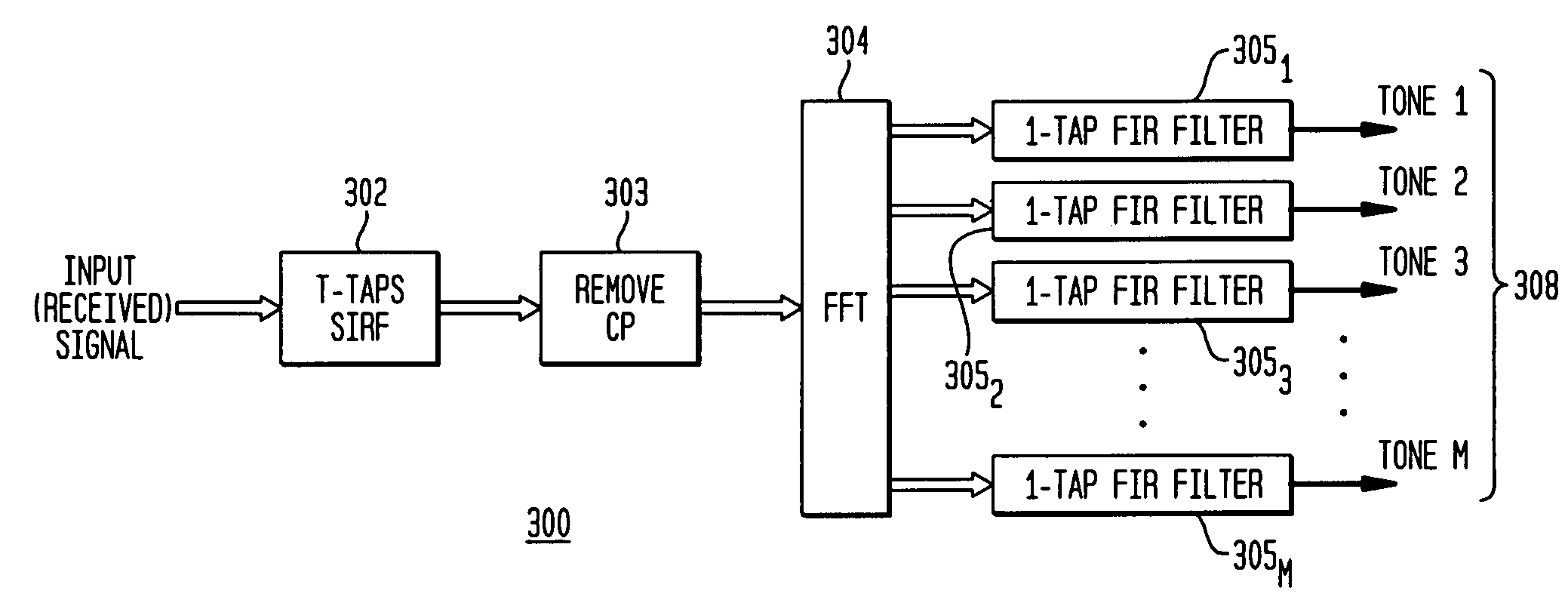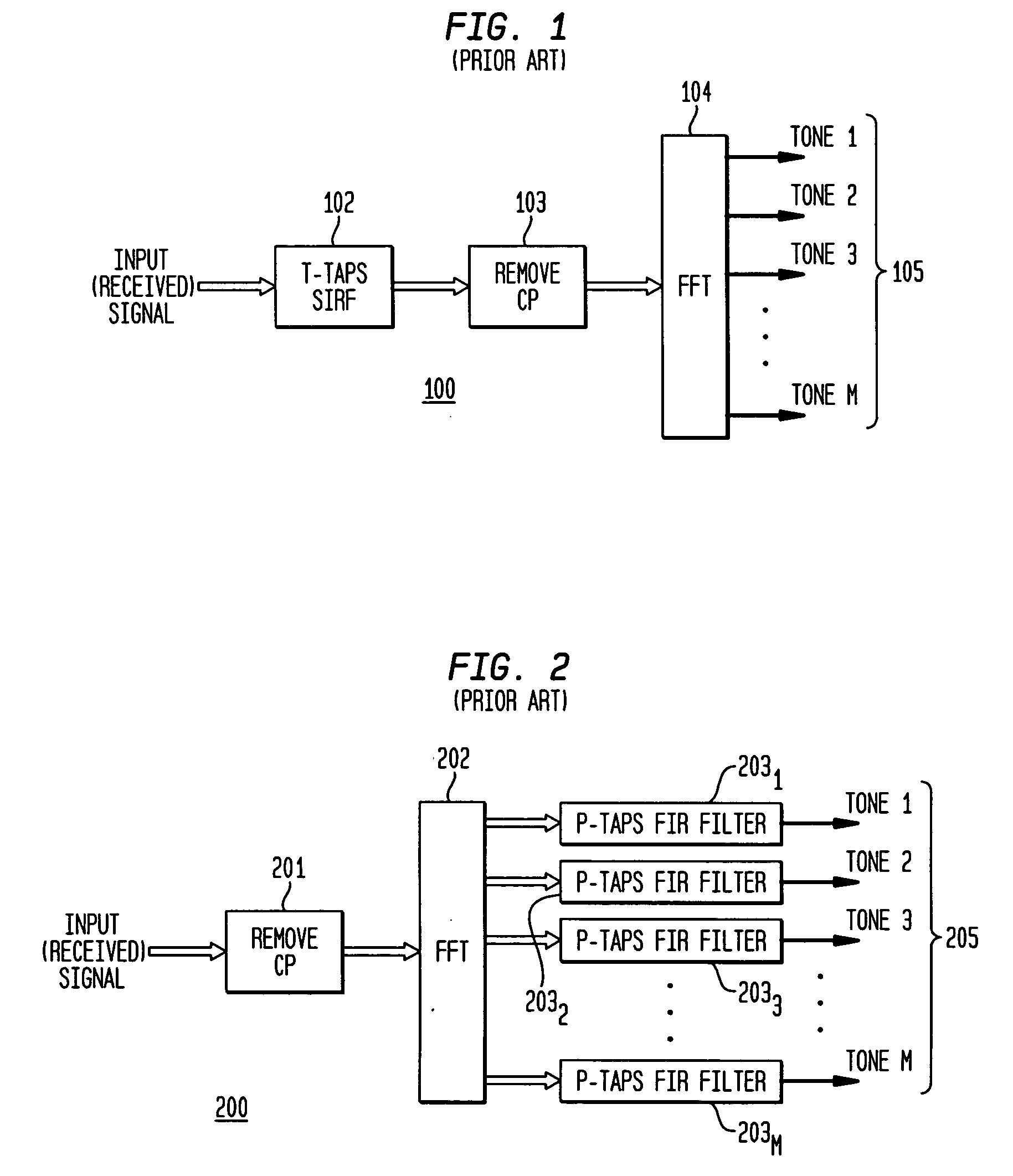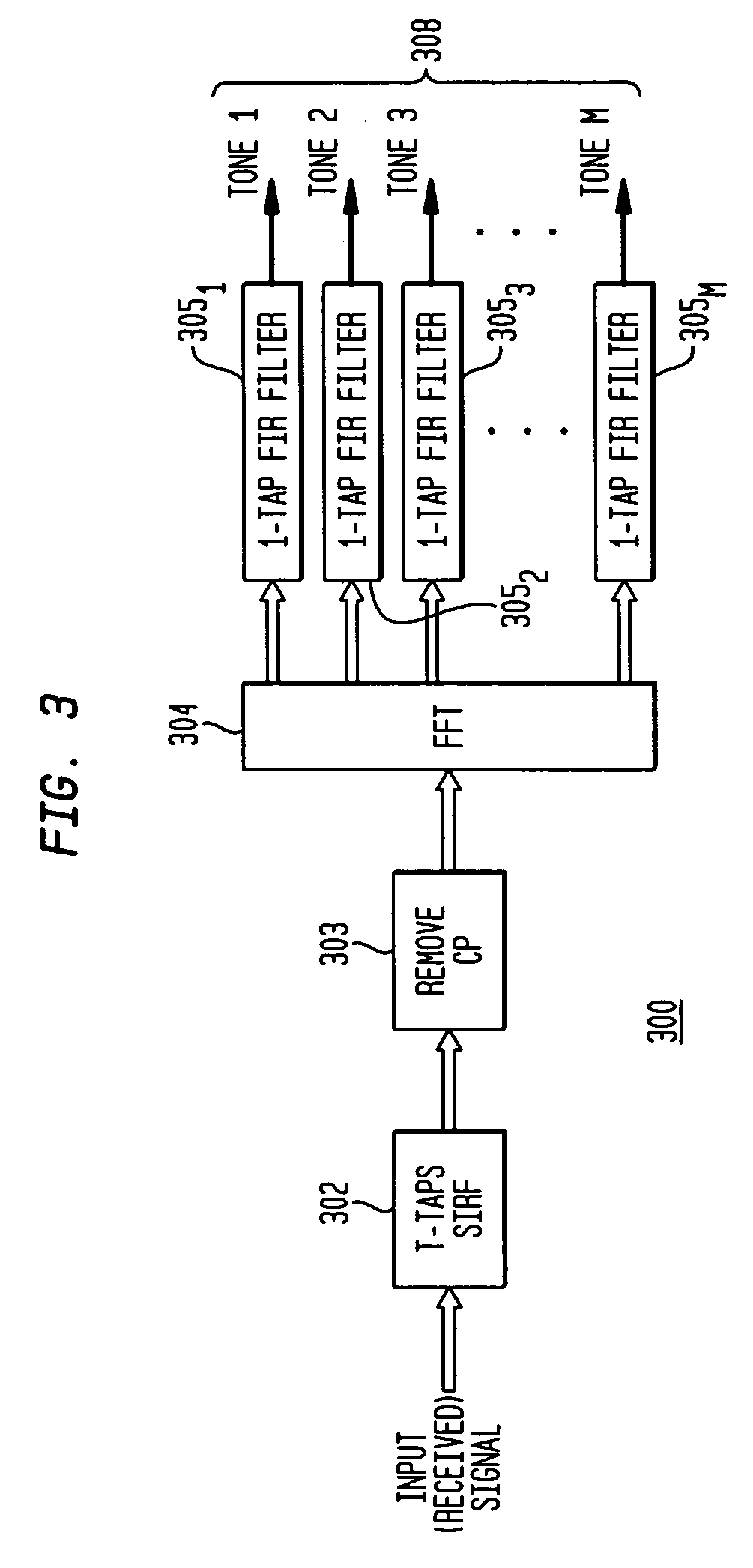Equalization for DMT and OFDM communication systems
a communication system and equalization technology, applied in the field of equalization for receivers, can solve the problems of channel capacity being highly degraded, available channel capacity in such a system is not a smooth function of synchronization, etc., and achieve smooth signal-to-noise ratio (snr) distribution function, improve overall performance, and improve the effect of hardware implementation
- Summary
- Abstract
- Description
- Claims
- Application Information
AI Technical Summary
Benefits of technology
Problems solved by technology
Method used
Image
Examples
Embodiment Construction
[0017] While the present invention is susceptible of embodiment in many different forms, there are shown in the drawings and will be described herein in detail specific embodiments thereof, with the understanding that the present disclosure is to be considered as an exemplification of the principles of the invention and is not intended to limit the invention to the specific embodiments illustrated.
[0018] There is described herein an equalization for DMT-based communication systems that offers distinct advantages when compared to the prior art. A system 100 known in the prior art is illustrated in block diagram form in FIG. 1. In the system of FIG. 1, an input signal 101 is received from the physical channel (telephone lines or wireless channels, for example). As a general principal, the input signal 101 would be received through an analog front end, processed through an analog to digital converter (ADC), and subjected to appropriate digital signal processing, although these element...
PUM
 Login to View More
Login to View More Abstract
Description
Claims
Application Information
 Login to View More
Login to View More - R&D
- Intellectual Property
- Life Sciences
- Materials
- Tech Scout
- Unparalleled Data Quality
- Higher Quality Content
- 60% Fewer Hallucinations
Browse by: Latest US Patents, China's latest patents, Technical Efficacy Thesaurus, Application Domain, Technology Topic, Popular Technical Reports.
© 2025 PatSnap. All rights reserved.Legal|Privacy policy|Modern Slavery Act Transparency Statement|Sitemap|About US| Contact US: help@patsnap.com



